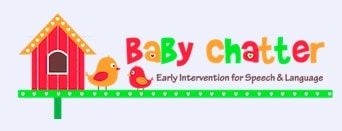

“NO!!!” could be the most challenging answer an slp can encounter when handing out a worksheet or activity to a student. The kid is simply not interested or demotivated or discouraged from school. You tried so hard explaining, talking, waiting, or casting all the magic spells yet the answer is still a BIG “NO!!!” It just doesn’t work out and you want to give up!
But before your world crashed down, Kelly of speech2u has shared her secret weapon and strategies for working with that “shut down kid.” Kelly is a Speech Language Pathologist since 1997 and also a blogger with posts about strategies to make a speech and language therapy more effective and fun.
Increase Motivation Tip #1: Use Special Interests
Celebrities jobs are keeping fit. My job is making sure that I know the current trends. I need to know the latest movies, the characters from Star Wars, who is Steve is and what a creeper does. I’m fortunate in that I have an 8 year old right now-but when I didn’t-I went and saw or rented a lot of kid movies. You don’t have to be an expert-but having a few names to throw out there-opens a door. Let them teach you about what they love.
Motivation Tip #2: Make Adjustments, not corrections
Some students have a really hard time hearing that they are incorrect. They might argue with you and tell you that they did say it right. The ability to self monitor is important-but you could try making adjustments instead of corrections. These may be your students with a fixed mindset, or they may have explosive rage issues. For these students I don’t correct them. Instead I will ask for a repetition with an adjustment. For example, if I am working on the word “thorn” and my student says, “forn” I might say, “Okay, bite your tongue and say “thorn” or let’s try that word again but this time bite your tongue and blow. If I can get them to do that-then I can work on discrimination. Let’s try something fun. Bite and blow and say thorn? Do you feel how your tongue is out? Let’s try it this way-keep your tongue in and say it? Which one sounds better to you. You may have to play around to see what works best for your student, but this works well for me with students that have explosive disorders.
Motivation Tip #3: Pre-teach and use Errorless Learning Techniques
This works particularly well with vocabulary and language therapy. No one wants to be wrong. Think about how often our language students are wrong during their day-how often do they get things right. How does that feel over time? I think some of my clients who shut down are afraid of more failure. It’s better to not give an answer than to be wrong. Pre-teach is giving them the answer before you start. I think syntax is an area where sometimes it seems like we are drilling and hoping that they get the answer right over time. Let’s compare two different sessions:
Here you’ll find the rest of her helpful strategies and you’ll discover that effective secret weapon worth emulating.
We all love to understand the “shut-down learners” for sure! Here, Dr. Richard Selznick, a psychologist, nationally certified school psychologist, graduate school professor, university professor of pediatrics and school consultant, published an article about understanding shut-down learners.



